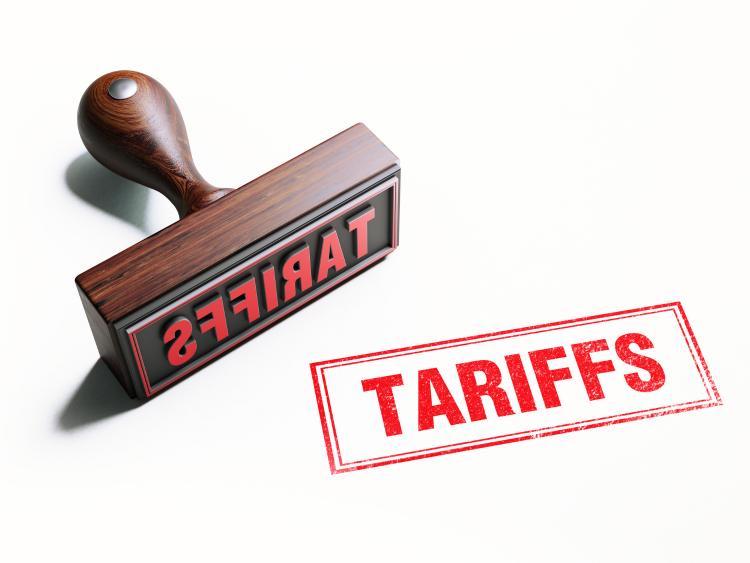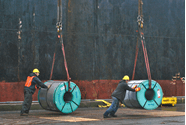Steel Markets

AGC: Construction Spending Undermined by Tariffs
Written by Sandy Williams
November 1, 2019
The Associated General Contractors of America maintains that trade fights with China, the EU and other countries are undermining demand for private sector construction projects.
“The best way to make sure our economy continues to expand is to quickly resolve a series of trade disputes that have contributed to business uncertainty and likely held back many new development and construction projects,” said Stephen E. Sandherr, the association’s chief executive officer.
Construction employment increased by 10,000 jobs in October and by 148,000, or 2.0 percent, over the past 12 months, while construction spending decreased by 2.0 percent from September 2018 to September 2019, according to an analysis of new government data by the Associated General Contractors of America.
“The construction industry is still adding workers at a faster clip than the overall economy, but growth has slowed as private nonresidential and multifamily construction spending shrinks,” said AGC chief economist Ken Simonson. “At the same time, public investment and a recent pickup in single-family homebuilding have helped employment to grow.”
Simonson observed that the 2.0 percent growth in construction employment between October 2018 and October 2019 was the slowest in almost seven years, but that the rate remained well above the 1.4 percent increase in total nonfarm payroll employment. Average hourly earnings in construction—a measure of all wages and salaries—increased 2.4 percent over the year to $30.95. That figure was 9.8 percent higher than the private-sector average of $28.18, Simonson noted.
Construction spending totaled $1.294 trillion at a seasonally adjusted annual rate in September, a gain of 0.5 percent from the August rate but 2.0 percent less than the September 2018 rate, according to estimates from the U.S. Census Bureau. Year-to-date spending for January-September combined fell 2.2 percent from the year-ago total.
Public construction spending increased 1.5 percent for the month and 5.6 percent year-to-date. Among the three largest public categories, spending in the first nine months of 2019, compared with the same period in 2018, climbed 9.3 percent for highway and street construction, 1.0 percent for educational construction and 9.1 percent for transportation (airports, transit, rail and port) projects.
Private residential construction spending increased 0.6 percent for the month, but slid 7.9 percent year-to-date. Single-family homebuilding rose 1.3 percent from August to September, the third consecutive monthly gain, but fell 8.0 percent year-to-date. Spending on multifamily projects declined 0.7 percent for the month, but was 5.9 percent higher year-to-date.
Private nonresidential spending decreased 0.3 percent from August to September and 0.6 percent year-to-date. Major private nonresidential segments experienced mixed year-to-date results. The largest—power construction (comprising electric power generation, transmission and distribution, plus oil and gas fields and pipelines)—climbed 5.5 percent year-to-date. Commercial (retail, warehouse and farm) construction plummeted 15.2 percent. Manufacturing construction posted a 3.2 percent gain. Private office construction spending rose 6.8 percent.

Sandy Williams
Read more from Sandy WilliamsLatest in Steel Markets

CMC looks beyond Arizona micro-mill woes to long-term viability of construction mart
Despite the economic and geopolitical upheaval of the last five years, CMC President and CEO Peter Matt points out that the construction market has been an essential element of the way forward.

US importers face stricter rules under revamped S232 tariffs
“CBP expects full compliance from the trade community for accurate reporting and payment of the additional duties. CBP will take enforcement action on non-compliance," the agency said in a March 7 bulletin.

Steel exports rebound in January
US steel exports recovered to a five-month high in January after having fallen to a two-year low in December. This growth follows four consecutive months of declining exports.

Construction spending drops marginally in January
Construction spending edged down slightly in January, slipping for the first time in four months. The US Census Bureau estimated spending at a seasonally adjusted annual rate of $2,196 billion in January, down 0.2% from December’s downward revised rate. The January figure is 3.3% higher than a year ago. January’s result, despite the slight erosion, […]

HVAC equipment shipments slow in December but strong annually
Shipments of heating and cooling equipment in the US fell to an 11-month low in December, according to the latest data released by the Air-Conditioning, Heating, and Refrigeration Institute (AHRI).
